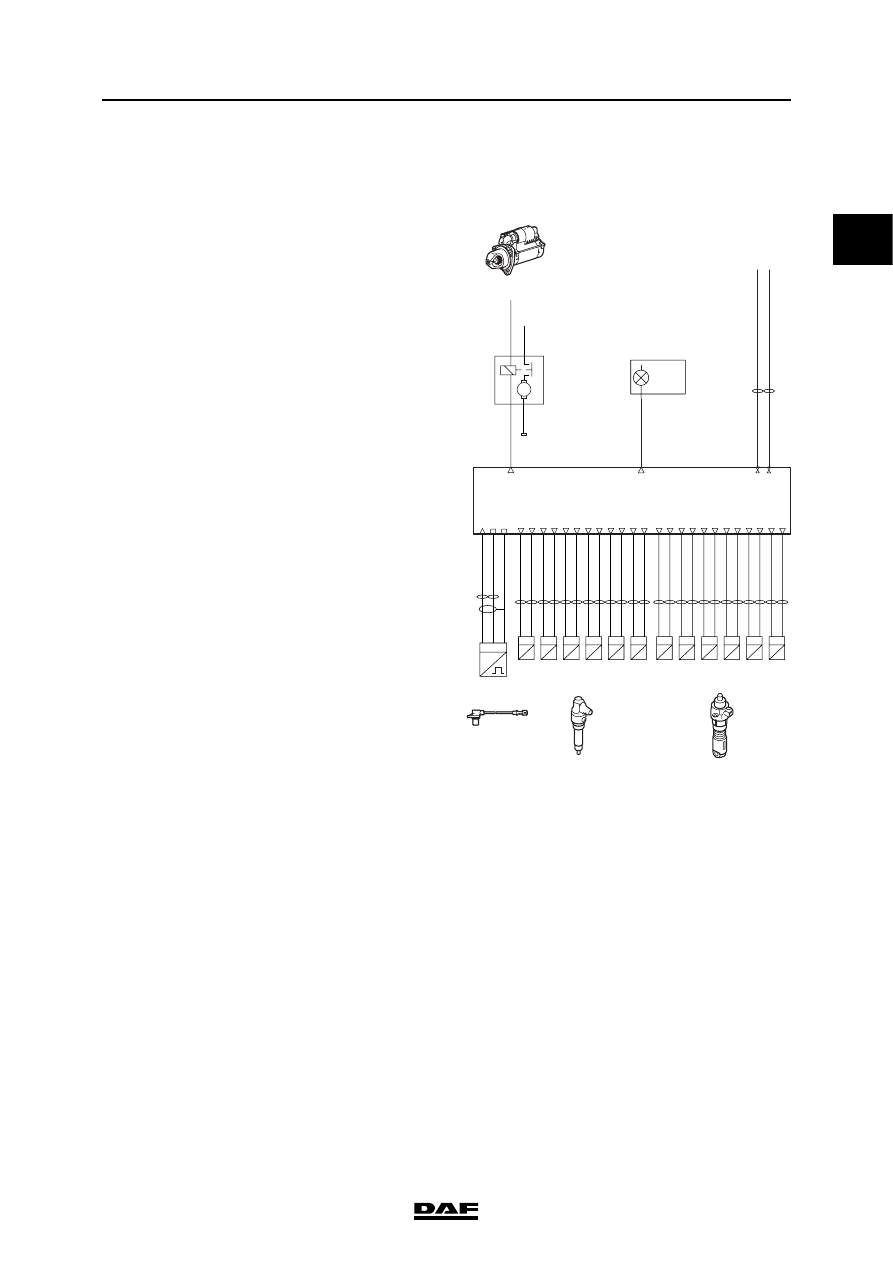DAF XF105. Manual - part 97

1
©
200528
3-7
Control functions
DMCI ENGINE MANAGEMENT SYSTEM
XF105 series
3.4 IMMOBILISER AND START INTERRUPTION
The complete control consists of three functions:
-
Fuel release immobiliser
-
Starter motor block immobiliser
-
Starter motor block if engine is running
Immobiliser
The task of the engine management system in
the immobiliser system is to release and block the
fuel supply and to block the starter motor. The
purpose of the immobiliser is to ensure that the
engine can only be started with the correct
ignition key.
When the vehicle ignition is turned on, the
immobiliser electronic unit reads the immocode
from the ignition key and compares this to the
codes (up to 5) stored in its memory. If the code
is correct, the immobiliser electronic unit creates
a coded CAN message and sends this via
V-CAN1 to the DMCI electronic unit (D965). The
DMCI electronic unit decrypts this CAN message
using the stored vehicle code. If the vehicle code
from the DMCI electronic unit and the vehicle
code from the immobiliser electronic unit are
identical, the CAN message is "approved".
The DMCI electronic unit releases the fuel supply
by on-going control of the pump units and
injectors.
If the codes do not match or there is a fault on the
CAN connection, the DMCI electronic unit will
block release of the fuel supply. The pump units
and injectors will then no longer be activated. The
DMCI electronic unit then informs the immobiliser
unit that the code was not correct and a fault code
is stored in the DMCI electronic unit and the
immobiliser electronic unit.
On the second attempt to start the DMCI will not
earth the starter motor (B010) via B09. The
starter motor will therefore not work.
If release of the fuel supply is blocked, a red fault
message is activated on the DIP master display,
the "STOP" lamp lights up and an acoustic signal
sounds. This message is sent via a CAN
message and output B22 to VIC-2.
i400993
1 2
high-side
low-side
Cyl.6
B136
1 2
high-side
low-side
Cyl.5
B135
1 2
high-side
low-side
Cyl.4
B134
1 2
high-side
low-side
Cyl.3
B133
1 2
high-side
low-side
Cyl.2
B132
A3
A7
A12
A23
A24
A15
A8
A19
A16
A4
A11
A20
1 2
high-side
low-side
Cyl.1
Pump units
B131
1 2
high-side
low-side
Cyl.6
B426
1 2
high-side
low-side
Cyl.5
B425
1 2
high-side
low-side
Cyl.4
B424
1 2
high-side
low-side
Cyl.3
B423
1 2
high-side
low-side
Cyl.2
B422
1 2
high-side
low-side
Cyl.1
Injectors
B421
A2
A8
A9
A22
A21
A14
A5
A18
A13
A1
A10
A17
Vehicle
CAN1
low
Vehicle
CAN1
high
CAN1 low
CAN1 high
B35
B27
B09
flywheel housing
ground
Starter
motor
To battery +
To start
connector
B010
50a
50 30
31
M
B22
C20
+
D310
engine
warning
RED
VIC-2
shield
N
2 1
signal
return
3
F552
speed
crankshaft
A49
A50
A60